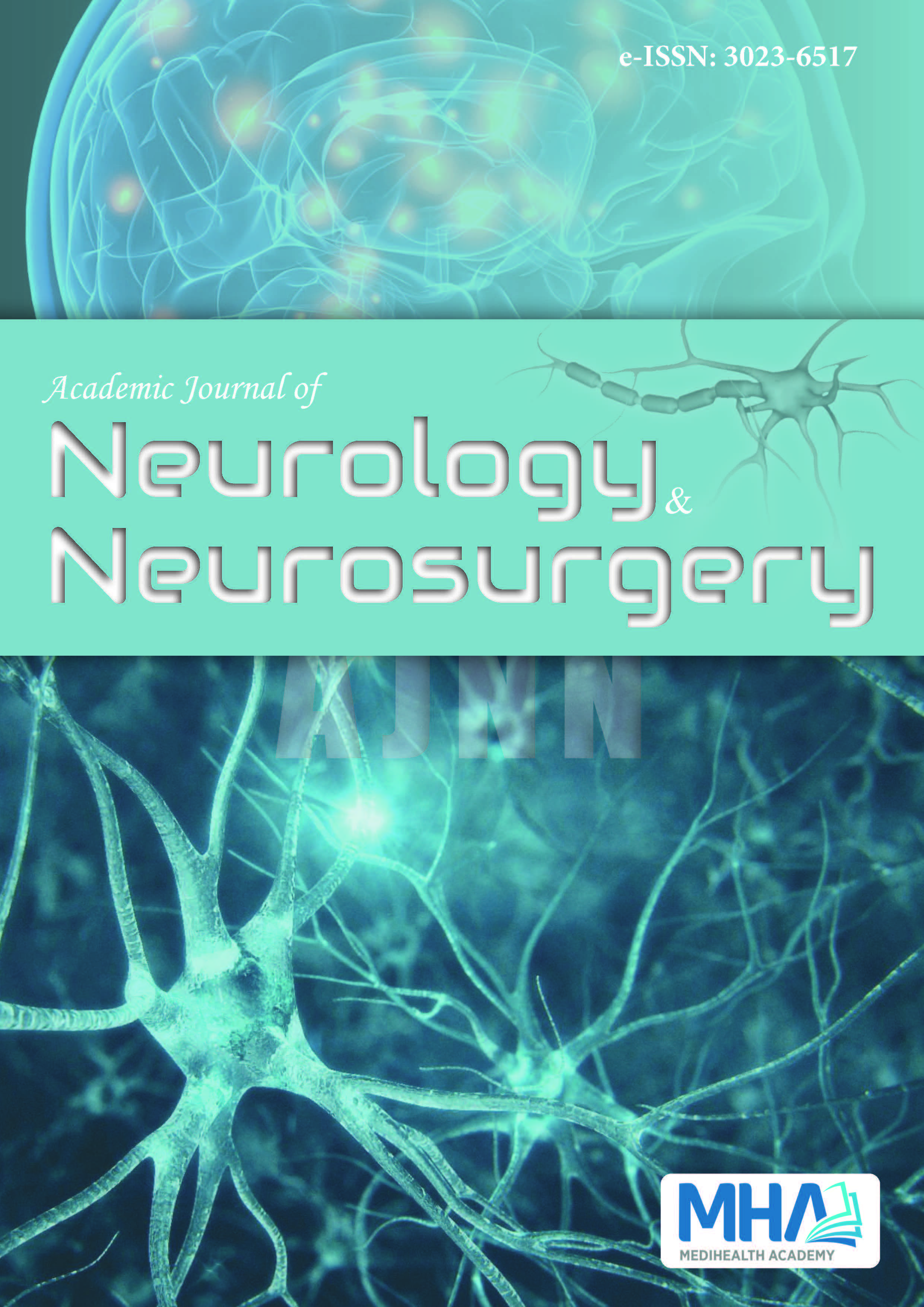1. Portegies MLP, Koudstaal PJ, Ikram MA. Cerebrovascular disease.Handbook Clin Neurol. 2016;138:239-261.
2. Çoban O, Ekizoğlu E. Beyin damar hastalıklarında tanımlar, sınıflama,epidemiyoloji ve risk faktörleri. In: Öge AE, Baykan B, Bilgiç B, eds.Nöroloji. 4th ed. Nobel Tıp Kitabevi: 2021:293-297.
3. Aho K, Harmsen P, Hatano S, Marquardsen J, Smirnov VE, StrasserT. Cerebrovascular disease in the community: results of a WHOcollaborative study. Bull World Health Organ. 1980;58(1):113-130.
4. Tsao CW, Aday AW, Almarzooq ZI, et al. Heart disease and strokestatistics—2023 update: a report from the American Heart Association.Circulation. 2023;147(8):e93-e621.
5. Monsour M, Borlongan CV. The central role of peripheral inflammationin ischemic stroke. J Cerebral Blood Flow Metabol. 2023;43(5):622-641.
6. Haupt M, Gerner ST, Bähr M, Doeppner TR. Neuroprotective strategiesfor ischemic stroke—future perspectives. Int Jf Mol Sci. 2023;24(5):4334.
7. Banasik JL. Pathophysiology-E-Book. Elsevier Health Sciences: 2021.
8. Camandola S, Mattson MP. Brain metabolism in health, aging, andneurodegeneration. EMBO J. 2017;36(11):1474-1492.
9. Lawen A. Apoptosis—an introduction. Bioessays. 2003;25(9):888-896.
10. Woodruff TM, Thundyil J, Tang SC, Sobey CG, Taylor SM, ArumugamTV. Pathophysiology, treatment, and animal and cellular models ofhuman ischemic stroke. Mol Neurodeg. 2011;6(1):1-19.
11. Deshpande OA, Mohiuddin SS. Biochemistry, OxidativePhosphorylation. 2023 Jul 31. In: StatPearls [Internet]. Treasure Island(FL): StatPearls Publishing; 2024 Jan-. PMID: 31985985.
12. Wilson DF. Oxidative phosphorylation: regulation and role in cellularand tissue metabolism. J Physiol. 2017;595(23):7023-7038.
13. Erecinska M, Dagani F. Relationships between the neuronal sodium/potassium pump and energy metabolism. Effects of K+, Na+, andadenosine triphosphate in isolated brain synaptosomes. J GeneralPhysiol. 1990;95(4):591-616.
14. Krnjevic K. Electrophysiology of cerebral ischemia. Neuropharmacol.2008;55(3):319-333.
15. Lau A, Tymianski M. Glutamate receptors, neurotoxicity andneurodegeneration. Pflügers Arch-Eur J Physiol. 2010;460(2):525-542.
16. Choi DW. Glutamate neurotoxicity in cortical cell culture is calciumdependent. Neurosci Lett. 1985;58(3):293-297.
17. Mayer ML, Westbrook GL, Guthrie PB. Voltage-dependent blockby Mg2+ of NMDA responses in spinal cord neurones. Nature.1984,309(5965):261-263.
18. Kalogeris T, Baines CP, Krenz M, Korthuis RJ. Cell biology of ischemia/reperfusion injury. Int Rev Cell Mol Biol. 2012;298:229-317.
19. Claassen JA, Thijssen DH, Panerai RB, Faraci FM. Regulation ofcerebral blood flow in humans: physiology and clinical implications ofautoregulation. Physiol Rev. 2021;101(4):1487-1559.
20. Hoiland RL, Fisher JA, Ainslie PN. Regulation of the cerebralcirculation by arterial carbon dioxide. Compr Physiol. 2011;9(3):1101-1154. doi:10.1002/cphy.c180021
21. Payne SJ. Cerebral blood flow and metabolism: a quantitativeapproach. Cerebral Blood Flow Metabol. 2017:1-42. doi.org/10.1142/9789813220577_0001
22. Hu X, De Silva TM, Chen J, Faraci FM. Cerebral vascular diseaseand neurovascular injury in ischemic stroke. Circulation Res.2017;120(3):449-471.
23. Onuk E, Kabataş S, Civelek E. Kafa travmasında sıvı ve elektrolitimbalansı. Türk Nöroşirürji Derg. 2020;30(2):250-253.
24. Hoiland RL, Fisher JA, Ainslie PN. Regulation of the cerebral circulationby arterial carbon dioxide. Comprehens Physiol. 2011;9(3):1101-1154.
25. Benson JC, Madhavan AA, Cutsforth-Gregory JK, Johnson DR, CarrCM. The Monro-Kellie doctrine: a review and call for revision. Am JNeuroradiol. 2023;44(1):2-6.
26. Michinaga S, Koyama Y. Pathogenesis of brain edema and investigationinto anti-edema drugs. Int J Mol Sci. 2015;16(5):9949-9975.
27. Tadevosyan A, Kornbluth J. Brain herniation and intracranialhypertension. Neurol Clin. 2021;39(2):293-318.
28. Emmez ÖH, Egemen E. Kafa içi basınç artışı tedavisinde pratikyaklaşımlar. Yoğun Bakım Derg. 2010;9(2):77-84.
29. Bader MK, Arbour R, Palmer S. Refractory increased intracranialpressure in severe traumatic brain injury: barbiturate coma andbispectral index monitoring. AACN Adv Crit Care. 2005;16(4):526-541.
30. Albers GW, Marks MP, Kemp S, et al. Thrombectomy for stroke at6 to 16 hours with selection by perfusion imaging. N Engl J Med.2018;378(8):708-718.
31. Shaik Noor F, Regan RF, Naik UP. Platelets as drivers of ischemia/reperfusion injury after stroke. Blood Adv. 2021;5(5):1576-1584.
32. Porzionato A, Macchi V, Stecco C, De Caro R. The carotid sinus nerve—structure, function, and clinical implications. Anatomical Record.2019;302(4):575-587.
33. Cipolla Marilyn J, Liebeskind DS, Chan SL. The importance ofcomorbidities in ischemic stroke: impact of hypertension on thecerebral circulation. J Cerebral Blood Flow Metabol. 2018;38(12):2129-2149.
34. Feigin VL, Stark BA, Johnson CO, et al. Global, regional, andnational burden of stroke and its risk factors, 1990-2019: a systematicanalysis for the Global Burden of Disease Study 2019. Lancet Neurol.2021;20(10):795-820.

